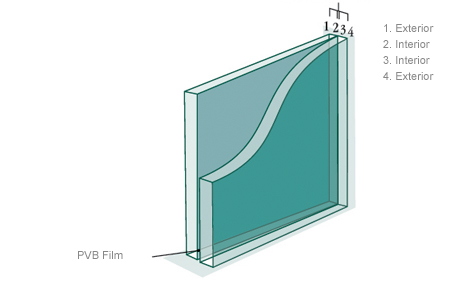Laminated glass and tempered glass are often used in windows and doors for their safety properties.
Laminated glass holds together when shattered, which helps prevent dangerous situations.
Tempered glass is mainly used as safety glass. Should a major shock cause breakage, the glass will be fragmented into small pieces, so as not to cause injury. Tempered glass is heated until it softens and then rapidly air-cooled. This gives a compression layer five times stronger than ordinary glass.

Acoustic and sound cancellation
Another important feature provided by laminated glass is its capacity to increase the sound insulation rating of a window. In fact, it significantly improves sound attenuation compared to non-laminated glass panes of the same thickness.
Whether you are located in downtown New York or near a crowded boulevard, our acoustic glass is an excellent and affordable solution to reduce sound transmission.
Elements you should look for:
STC values
STC stands for Sound Transmittance Class.
This value was established to determine how much sound a material can stop. In terms of windows and doors, the average STC goes from 18 to 38. The higher the value, the better sound insulation the material will have in most cases.
OITC
OITC stands for Outdoor-Indoor Transmittance Class.
This new value was developed in the 90s to measure the amount of street sound (voices, cars, trains, low-flying airplanes, sirens, etc.) that goes through different materials, including windows and doors.

